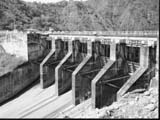 |
|
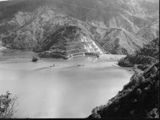 |
|
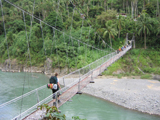 |
| BINGA
DAM AND RESERVOIR.
Binga dam was the second to be set up on the Agno River, after Ambuklao
dam was built upstream in Bokod, Benguet in the 1950's. Above left,
the Binga dam and spillway structure. Above right, the reservoir. |
|
HANGING
BRIDGE.
A hanging bridge crosses the Chico river at Tomiangan, a village in
upper Tabuk. Kalinga. The village and scores of others would have
been submerged if the Chico dam project had pushed through. |
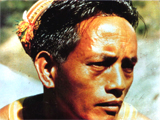 |
|
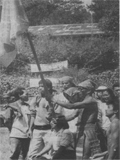 |
|
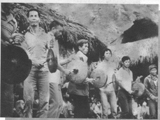 |
MACLIING
DULAG.
Macliing Dulag, a Kalinga tribal leader, was killed by Phil. Army
troops on April 24, 1980 due to his staunch opposition to the Chico
dam project. His death anniversary is now commemorated as Cordillera
Day.
|
|
ANTI-DAM
OPPOSITION.
The Kalinga and Bontoc tribal communities rise up to oppose the Chico
dam project, effectively combining both indigenous and state-sanctioned
means, both in the legal and armed arenas. |
|
PLAYING
GONGS.
Ama Daniel Ngayaan (4th from left), a Kalinga tribal leader of the
anti-Chico dam opposition, joins other local elders in a gong dance,
in one of many indigenous gatherings that he attended. On October
6, 1987, Ama Ngayaan was abducted by the so-called "Cordillera
Peoples’ Liberation Army" (CPLA), a paramilitary group
under the AFP. Until today, his body has not yet been found. |
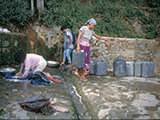 |
|
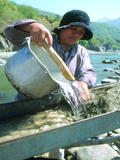 |
|
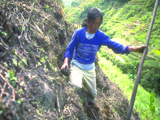 |
| LIVELIHOODS
AFFECTED BY DAMS.
Among indigenous communities, even those near the urban centers such
as in Itogon, Benguet, much of the natural resources such as water,
mineral, forest and pasture resources are accessible, if not owned,
communally. Above left, a communal piped-water system. Above center,
gold panning on the Agno. Above right, ekeing out a swidden farm on
the steep mountainsides. All these are now adversely affected by the
operation of the San Roque dam. |
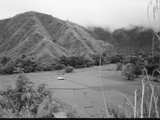 |
|
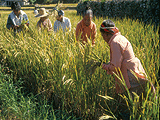 |
|
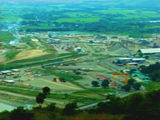 |
| ANCESTRAL
RICELANDS LOST FOR GOOD.
Dalupirip in Itogon, Benguet, has retained much of its indigenous
and rural lifeways despite its proximity to Baguio City. People here
still eke out a big part of their livelihood by tilling the soil like
their ancestors did, on much the same ancestral lands. Above left,
ricefields in Bolangit. Above center, harvesting indigenous rice varieties.
Above right, former ricelands now taken over by the San Roque dam
project. |
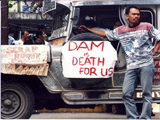 |
|
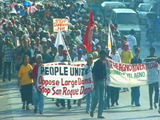 |
|
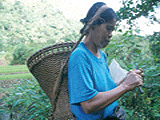 |
| THE
STRUGGLE CONTINUES.
The Ibaloy people's struggle for land, livelihood and justice
is far from finished (above left, center). It will go on because it
is a struggle for survival, a struggle for life. In the meantime,
other dam projects are being opposed by other indigenous communities,
such as this woman (above right) from an Ifugao community that opposes
the Matuno dam nearby. |
Photo
Archives
- Presidential
Proclamation 1017
- WTO
People’s Protest
- Indignation
rallies for Pepe Manegdeg and Albert Terredaño
- Lepanto
Strike (September 2005)
-
-
- TADEK
Third General Assembly
- MAITUD
Launching
-
-
- Buaya,
Balbalan, Kalinga Province Protests
Storm GMA Visit in Baguio
|
|



